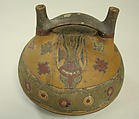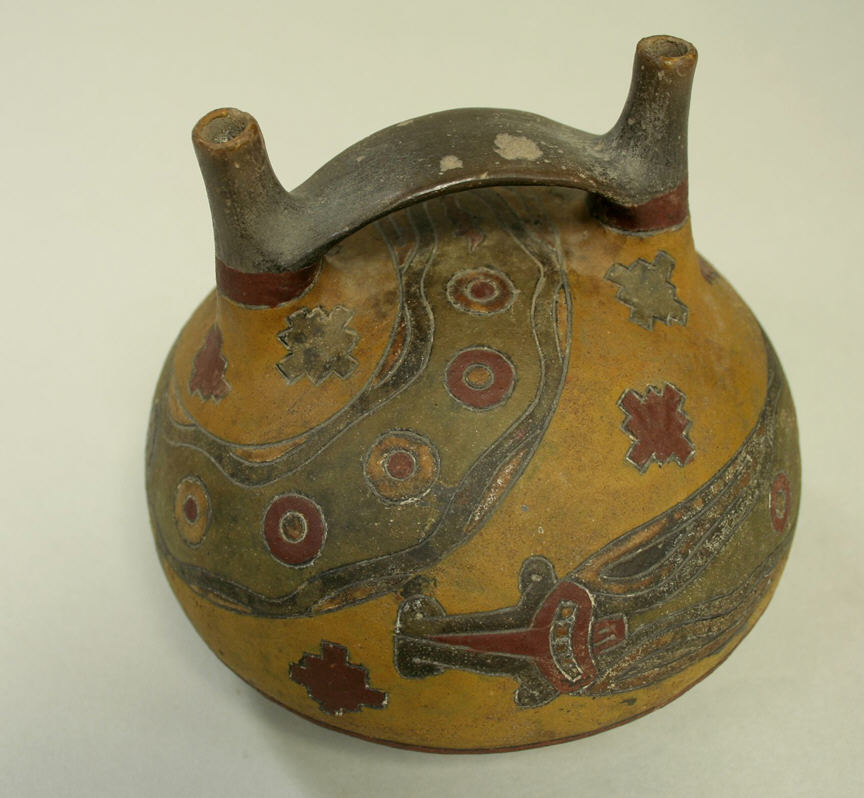Double Spout and Bridge Bottle with Snake
Not on view
This double spout bridge bottle is decorated using low-relief incised lines which outline a two-headed snake whose body wraps around the entire vessel. A mustard yellow background highlights the design. Two snake heads are on opposing ends of the snake body: one head appears on the top of the vessel adjacent to the double spout and bridge, tongue extended. The other head, parallel to the body, entwines the width of the vessel. Geometric designs in alternating red, green, and grey colors highlight the snake on top of the vessel. Linear serpentine figures are a common motif in Paracas art and appear on textiles and ceramics such as 64.228.189 and 33.149.23 from the MMA’s collection. Pattern and color were highly esteemed in the visual arts of Paracas society, which thrived on the south coast of Peru between 700 B.C.–A.D. 1.
This vessel’s emphasis on a central animal figure, geometric patterns, and color palette are also noted on several other Paracas double spout and bridge examples in the Metropolitan Museum of Art’s collection such as 64.228.84 and 64.228.97. These hues were possibly indicative of a color-coded system created to represent a particular ceremony or a specific person or social ranking. Dualism was a fundamental ideology in Andean cosmology and expressed in this vessel’s form, such as: dual spouts, imagery such as the snakeheads at each end of the winding serpent body, or the geometric forms depicted in pairs on either side of the snake head. The double-headed serpent design was created through incision on the vessel prior to firing. After the ceramic was fired, lively colors were applied creating the desired effect of vibrant colors. The exact purpose of this vessel is unknown, however bottles such as this one have been found as part of a funerary offerings.
Christina De León, Ph.D. student, Bard Graduate Center, 2017
References
DeLeonardis, Lisa. “Encoded Process, Embodied Meaning in Paracas Post-fired Ceramics” in Making Value, Making Meaning: Techné in the Pre-Columbian World, edited by Cathy Lynne Costin, pp. 129-166. Washington, D.C.: Dumbarton Oaks Research Library and Collections, 2016.
Stone, Rebecca R. Art of the Andes: From Chavín to Inca, Third edition. London: Thames & Hudson, 2012.
Due to rights restrictions, this image cannot be enlarged, viewed at full screen, or downloaded.
This artwork is meant to be viewed from right to left. Scroll left to view more.



